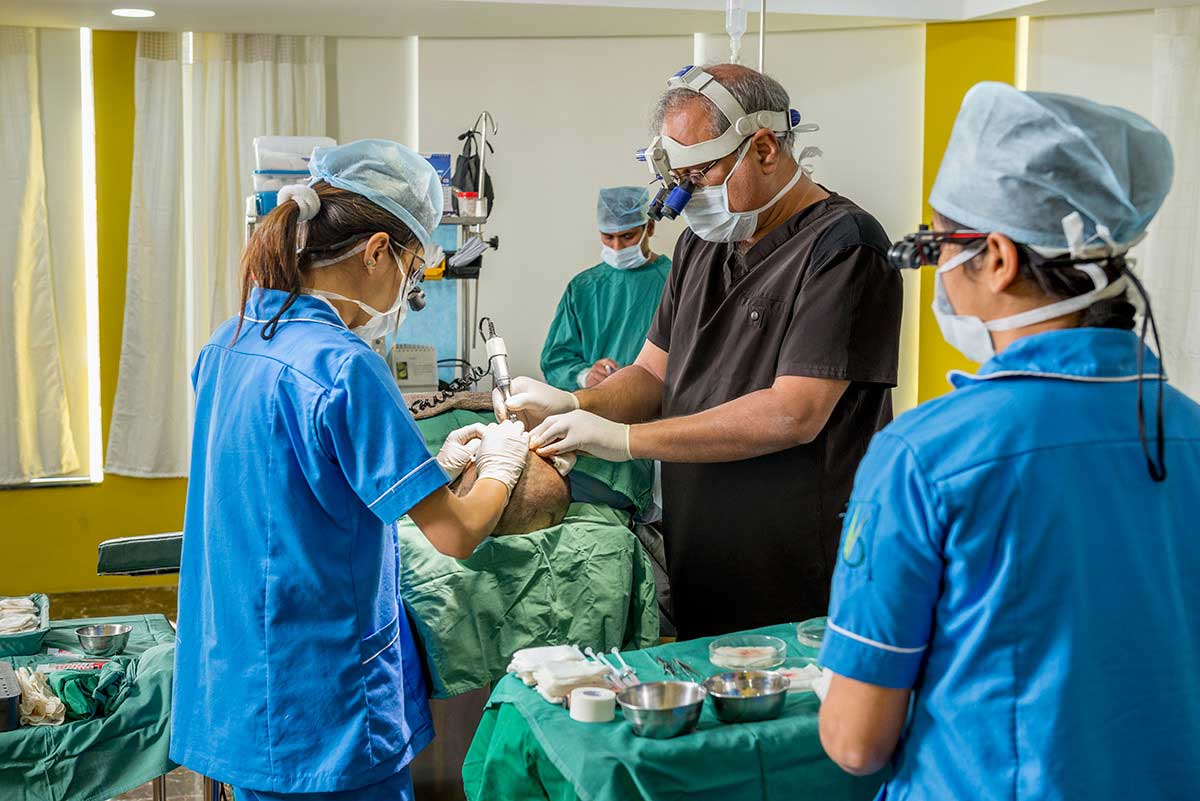When I was a kid, I loved spending time in my garden, believing that all it took to grow a beautiful plant was to bury a seed in the soil and water it. 
I’d wake up each morning, hopeful and excited, eagerly checking for signs of life. But more often than not, nothing would sprout. It left me confused and disappointed.
Over time, I realized that a seed needs far more than just soil and water—it requires warmth, sunlight, nutrients, and the right conditions to truly thrive.
Today, as a hair transplant surgeon with over 20 years of experience, I often think back to those childhood lessons. In most hair transplants, the recipient area—the ‘soil’—is healthy, and the real challenge lies in ensuring the ‘seed’ (the graft) is strong and well-handled.
But when it comes to revision procedures, things get more complicated. The recipient area is no longer pristine; it’s burdened with scar tissue—almost like trying to grow a new plant in soil that’s been hardened and depleted. Now, the challenge isn’t just about ensuring the seed is healthy—it’s also about finding ways to nurture the soil back to life.
In redo procedures therefore, the problem now lies both with the seed and the soil..
Why Does Graft Survival Decline in Revision Procedures?
When performing a primary hair transplant, the recipient area is relatively untouched. The vascular network that nourishes the implanted grafts is intact, and the scalp tissue is supple, allowing for easy insertion of grafts. However, in revision procedures, the recipient area often presents a host of challenges:
1. Scar Tissue Formation
Scar tissue is the primary factor that compromises graft survival in revision cases. After a previous procedure, the healing process results in fibrosis, which thickens and stiffens the scalp tissue. This scarring restricts blood flow, reducing the oxygen and nutrients that the newly implanted grafts need to survive. Imagine planting a seed in dry, cracked soil; even if the seed is healthy, the chances of it sprouting are drastically reduced.
2. Reduced Blood Supply
In an untouched scalp, the blood vessels provide ample circulation to support newly transplanted grafts. However, previous incisions and microtrauma disrupt this network. With each subsequent procedure, the available vascular bed becomes less efficient. This is why a second procedure in the same area often results in weaker or patchier growth.
3. Compromised Skin Elasticity
Repeated surgeries reduce the elasticity of the scalp tissue. Skin that has been stretched and manipulated multiple times becomes rigid, making graft placement more challenging. This stiffness also increases the risk of compression—where implanted grafts face pressure, limiting their growth potential.
4. Graft Storage and Handling
While a skilled surgeon handles grafts with utmost care, in revision cases, prolonged handling becomes more likely due to the complexity of finding viable areas to place the grafts. Prolonged graft ischemia (oxygen deprivation) further reduces the survival rate.
5. Increased Inflammation
The recipient area may have lingering inflammation from the previous procedure. Chronic inflammation can inhibit new hair growth, making it harder for grafts to anchor securely and thrive.
6. Donor Area Fatigue
Another overlooked factor is the state of the donor area itself. Patients requiring multiple procedures often have limited donor reserves. Harvesting additional grafts from a compromised donor area may yield weaker hair follicles, further reducing the success rate.
Strategies to Improve Graft Survival in Revision Procedures
While revision transplants are undoubtedly more complex, several strategies can optimize outcomes:
1. Pre-operative Scalp Conditioning
Improving scalp vascularity before surgery can significantly enhance graft survival. Techniques such as microneedling, platelet-rich plasma (PRP) therapy, and minoxidil application can boost blood flow to the recipient area.
2. Strategic Graft Placement
In revision cases, a strategic approach is crucial. Placing grafts in areas where the scalp shows better vascularity and avoiding regions with dense scarring can improve overall survival. The use of smaller grafts in scarred areas often yields better results.
3. Increased Graft Hydration
Extended graft out-of-body time must be minimized. Using advanced storage solutions like HypoThermosol, which preserves follicle vitality, can make a notable difference in survival rates. The in vivo graft preservation technique that I follow has stood me in good stead over the years.
4. Staged Procedures
Rather than attempting to fill an entire bald area in one go, staged procedures spread over months can allow the scalp to recover and rebuild its vascular network, creating a better environment for future grafts.
5. Post-operative Care
Patients undergoing revision surgery require meticulous aftercare. Anti-inflammatory medications, low-level laser therapy (LLLT), and strict adherence to post-op guidelines can reduce complications and improve results.
Managing Patient Expectations
Patients often expect their second or third procedure to deliver the same dense, natural-looking result as their first. However, with compromised scalp conditions, this is rarely the case. The goal in revision cases is often to create an improved appearance, camouflage scarring, and add density where possible rather than achieve flawless coverage.
I often explain this to patients using the garden analogy: “If you plant a seed in rocky soil, you can’t expect the same lush growth as you would from fertile ground. The trick lies in nurturing that seed with additional care to achieve the best possible outcome.”
The Emotional Toll of Revision Transplants
Many patients seeking revision procedures carry emotional scars along with their physical ones. Failed transplants, unnatural hairlines, or patchy growth often lead to anxiety and self-doubt. As a surgeon, empathy is crucial. Managing their concerns while providing honest insights about the achievable outcome is key to building trust and ensuring satisfaction.
Conclusion
A second or third hair transplant procedure is like trying to plant flowers during a drought—each new attempt faces tougher conditions, requiring extra care and patience.
As I always tell my patients, “Don’t expect the same garden to bloom twice without understanding that the soil has changed.”
If you are considering a revision procedure, patience and realistic expectations are your strongest allies—and the right surgeon, your guiding hand.
#hairtransplant #hairtransplantinindia


